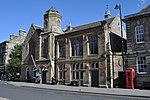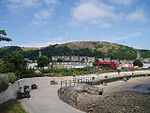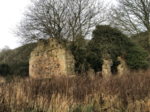Burntisland Shipyard F.C.
1925 establishments in ScotlandAssociation football clubs established in 1925BurntislandEast of Scotland Football League teamsFootball clubs in Fife ... and 3 more
Football clubs in ScotlandUse British English from May 2015Works association football teams in Scotland
Burntisland Shipyard Football Club are a Scottish football club based in the town of Burntisland, Fife. The club competes in the East of Scotland League Second Division and play their home matches at Recreation Park. They are full members of the Scottish Football Association.
Excerpt from the Wikipedia article Burntisland Shipyard F.C. (License: CC BY-SA 3.0, Authors).Burntisland Shipyard F.C.
Glebe Place,
Geographical coordinates (GPS) Address External links Nearby Places Show on map
Geographical coordinates (GPS)
| Latitude | Longitude |
|---|---|
| N 56.0643 ° | E -3.2361 ° |
Address
Burntisland Shipyard F.C.
Glebe Place
KY3 0EN
Scotland, United Kingdom
Open on Google Maps










